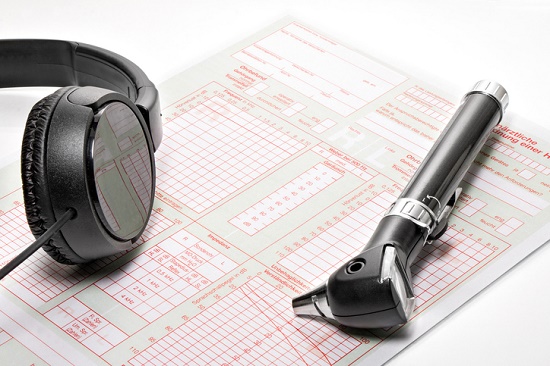
The hearing exam truly is the easy part. The difficult part is acknowledging your hearing loss and actually setting up the hearing test in the first place.
You have more than likely read the stats by now: 48 million people in the US suffer from hearing loss but only a minor fraction actually do anything about it, and only 20 percent of those who could reap benefits from hearing aids actually use them.
So if you’ve already arranged your hearing test, well done, you’ve already conquered the most significant barrier to healthier hearing.
The hearing test, as you’ll notice, is an easy, non-invasive procedure that will pinpoint the magnitude of your hearing loss to help determine the most appropriate method of treatment.
Shortly after you initially arrive at the office, you’ll begin by filling out some paperwork. Then, you’ll meet with your hearing care provider to review your hearing health history.
Your Hearing Health History
Your hearing loss, if present, can be due to direct exposure to loud sound, the normal aging process, or by an underlying ailment. You’ll want to exclude any underlying medical conditions prior to moving on to the actual hearing exam.
If you have an impaction of earwax, for instance, you may very well be hearing better within minutes after a professional cleaning. The existence of any other conditions will be considered and the applicable referral made, if required.
After a review of your basic medical history, you’ll go over your exposure to loud sounds, your hearing loss symptoms, and exactly what you would like to achieve with better hearing.
It’s very important to establish potential causes, how symptoms are negatively affecting your life, and how better hearing will enhance your life, which is all things considered the whole point. Be skeptical of the practitioner that doesn’t appear to really care about the main reasons why you want to improve your hearing to begin with.
The Hearing Test
There’s one additional step before starting the hearing test: the visual evaluation of the ear with a device known as an otoscope. This will help rule out any issues with the ear canal, the eardrum, or the excess accumulation of earwax.
Next, you’ll be accompanied to a sound-treated room with your hearing care professional. You’ll be required to put on headphones, and the provider will start to play you some sounds.
You’ll be presented with various sounds at different frequencies, and you’ll be asked to identify the quietest sounds you can hear at each frequency. This is labeled your hearing threshold, and the hearing care professional will record these values on a graph known as an audiogram.
The hearing exam might also entail speech testing, where you’ll be asked to repeat the words delivered to you. Various types of words, delivered at various volumes with and without background noise, will be introduced. This will help ascertain if hearing aids can assist you with speech understanding.
When the hearing test is concluded, your hearing care provider will review the results with you.
Assessing Your Hearing Test Results
Referring to your audiogram, your hearing care professional will now talk about your hearing in both ears. Based upon the results, your hearing will be categorized as normal or as exhibiting mild, moderate, severe, or profound hearing loss.
If a hearing loss is present, the next move is talking about your treatment options. Since there are no current medical or surgical treatments to restore hearing damage, this means comparing your hearing aid options.
Modern hearing aids come in a whole range of shapes, sizes, and colors, at different prices with a number of advanced functions and features. In selecting your hearing aids, it’s essential to work with a competent hearing care professional for three main reasons:
- They can help you identify the best hearing aid model to satisfy all of your goals.
- They can help you identify the advanced functions you need—as well as with the ones you don’t—at a price that suits your budget.
- They can program your new hearing aids to enhance only the sounds you have difficulty hearing—established by the hearing test—ensuring optimal sound quality.
And that’s it, a fast, easy procedure in exchange for a lifetime of healthier hearing. We’d say that’s a very good deal.
We look forward to seeing you!